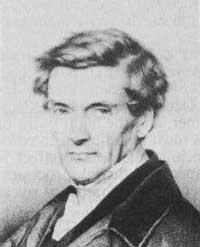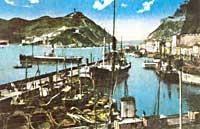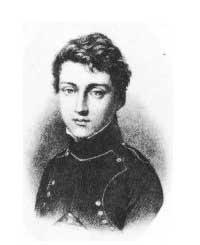Gustav-Gaspard Coriolis
1994/06/01 Azkune Mendia, Iñaki - Elhuyar Fundazioa Iturria: Elhuyar aldizkaria
French engineer and mathematician born in Paris on May 21, 1792. There he studied and studied Engineering of Roads and Bridges. He was then assistant professor at the Polytechnic School from 1816 to 1838.
Coriolis first used the terms work and kinetic energy, endowing them with a modern physical meaning in his main book. He published his work in 1829, entitled Keep de l’effet des machines, “Calculating machine effects”. It attempted to apply mechanics to theoretical principles.
Coriolis defined for the first time kinetic energy as half the mass by the square of speed. The work done in a body is the result of multiplying the force exercised by the distance traveled by that force overcoming the resistance.

Another of the works published in 1835 was the Théorie mathématique des effets du jeu de billiard (“Mathematical theory of the effects of billiards”), but the work of Sur les équations du mouvement relatif des systèmes de corps sent to the Journal de l’Ecole Politechnique in the same year on movements related to body equations.
In 1844 he published another book: Traité de la mécanique des corps solides.
However, Coriolis made his main work in 1835. He studied the surface in rotation with mathematical method and experimentation. The Earth, for example, takes a complete turn in twenty-four hours, but the length of the path traveled by a point of the equator and a point of the pole is not the same. A point in Ecuador must travel 40,000 kilometers to the East all day at 1,600 kilometers per hour. However, a point in latitude of New York has to travel 20,500 kilometers to the East and an approximate speed of 1,300 kilometers per hour.
The air at the height of the equator also has higher speed and when moving north, its maximum speed keeps moving eastward with respect to the lower dry surface, which moves more slowly. The same goes for ocean currents.
The forces leading to the air and water to the east are called Coriolis forces, causing turbulence, hurricanes and tornadoes.
Coriolis forces must also be taken into account in other areas: satellite shots, artillery launches, etc.
Coriolis died in his hometown of Paris on 19 September 1843.

Gai honi buruzko eduki gehiago
Elhuyarrek garatutako teknologia





